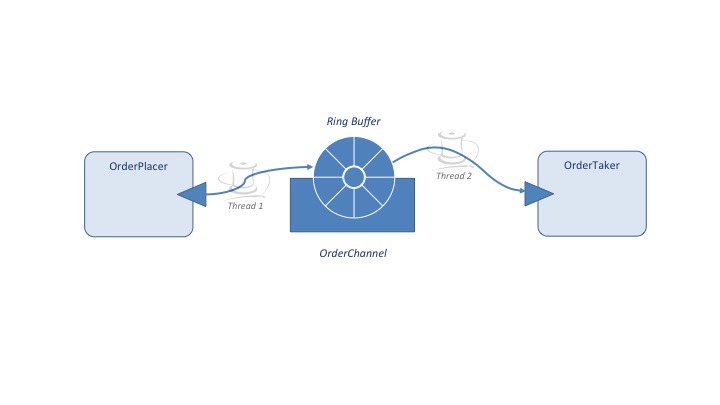...
Ring buffer channels are designed to avoid contention by placing events on a circular buffer implementation, in this case the LMAX Disruptor. Consumers running on different threads receive events from the buffer.
Using Disruptor-based channels is simple. All that needs to be done is to specify the ring.buffer channel type as shown below:
...
| Code Block | ||
|---|---|---|
| ||
public void class OrderPlacer ... {
@Producer(target="OrderChannel")
protected OrderChannel channel;
public void placeOrder(Order order) {
channel.publish(order);
}
} |
| Code Block | ||
|---|---|---|
| ||
public void class OrderTaker ... {
@Consumer(source="OrderChannel")
public void onOrder(Order order) {
....
}
} |
...
By default, Fabric3 uses JDK proxies to create producer proxies. JDK proxies are less performant than handwritten code and allocate objects during invocation (for example, an array to create parameter values). Fabric3 provides an optional extension that uses bytecode generation to create proxies. This results in proxies that are as fast as handwritten code and do not allocate objects during invocation. To enable bytecode generation, the fabric3-bytecode-proxy module must be installed in the runtime. Its maven dependency coordinates are org.codehaus.fabric3:fabric3-bytecode-proxy.
...
